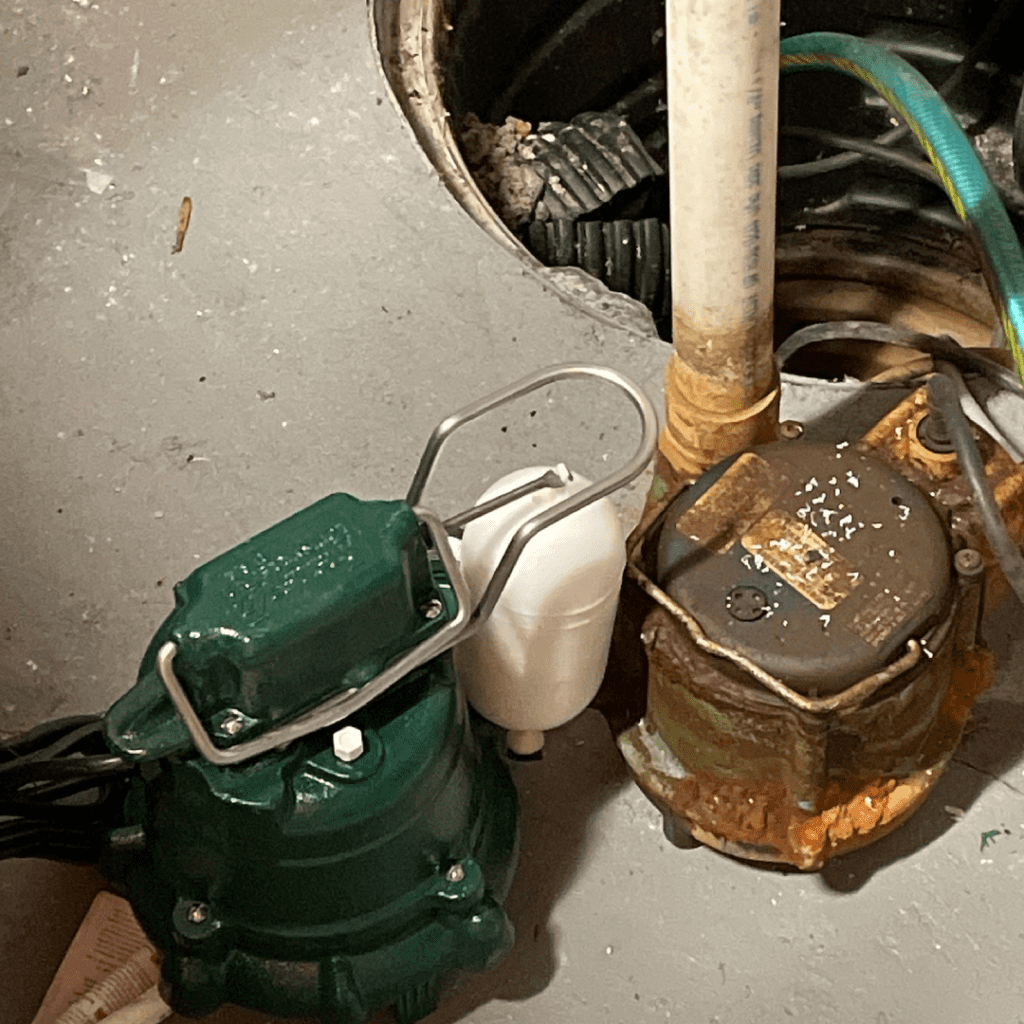Is It time to replace your Montclair sump pump?
The answer to this question depends on a variety of factors, including the age of your sump pump, its condition and performance, and the amount of water entering your basement. If your sump pump is performing adequately in normal operation and there are no signs of wear and tear, then it may not be time to replace it yet. However, if your submersible sump pump is more than a few years old or has become sluggish or inefficient, then it might be time to replace it. You should also consider whether or not your current pump is sufficient for the volume of water entering your basement. If you believe that the size and/or power of your sump pump is inadequate for the task, then you should replace it with one that is capable of handling the load.
12 Signs that Suggest Its Time
1. Constant strange noises coming from the pump
2. Poor suction power from the pump
3. Frequent jamming or clogging of the impeller
4. Motor running for longer than usual times
5. Age of the sump pump is more than 8 years old
6. Motor starts to overheat after some time of usage
7. Erratic cycling of the pump motor or high water level
8. Puddles of water around the base of the sump pump
9. Odd smells emanating from the unit
10. Corrosion and rust buildup in or around the unit
11. Pooling of water in and around the area near your sump pit
12. Substantial drop in efficiency and effectiveness
Regular sump pump maintenance is essential to ensure the long life of your pump and to protect your home from basement flooding. By performing routine checks, such as clearing any debris from the pit and testing the float switch, you can extend the life of your pump. In addition, cleaning and inspecting the discharge line for blockages will help insure that your pump is working properly when it’s needed. Lastly, keeping your sump pump in good working order will safeguard your basement and home from flooding.
Quick DIY Sump Pump Maintenance Tips
- Visually inspect the sump pump at least twice a year (in spring and fall). Check to ensure that all components are intact, with no signs of damage or deterioration.
- Check to make sure the float is functioning correctly. The float should be able to move freely, without sticking in any one position. If it appears stuck, gently manipulate it to try, get it working properly again.
- Check the discharge pipe to make sure it is firmly attached and not blocked or kinked. This pipe ideally should be rigid schedule 40 PVC with glued joints. Make sure that it is directing the water away from your home’s foundation (minimum of 10′) as intended. If pipe discharges above ground, a freeze guard is recommended.
- Check for sediment build-up at the bottom of the sump pit by stirring up the sediment with a shovel and ensuring there is enough clearance for proper operation of the pump’s impeller mechanism.
- Fill a bucket or container with water and pour it into the sump pit slowly to ensure that the pump is kicking on as soon as necessary, and that it has enough power to expel all water quickly from its outlet hose/pipe system .
- Make sure that all hoses/pipes are clear of any blockage or obstruction, so they don’t become a backup issue in the future.
- Test run your pump by turning off its power supply, disconnecting its plug and allowing the entire system to fully empty before switching it back on and running it again for several minutes until it switches off naturally – this should happen at least once every six months when conducting maintenance checks.
What Should You Do If Your Sump Pump Overflows Or You Get Water In Your Basement
First, insure your sump pump is off, preventing it from causing further damage and further flooding of your home. Remove all water from the affected area using a wet-dry vacuum, mops, towels or a combination of these items. If the cause was sewage backup or overflow, be sure to dispose of any contaminated items (such as carpets or other materials) in order to avoid mold & mildew growth or worse in your home. Clean up any residual water that may be present and dry the area thoroughly with fans, dehumidifiers, or other methods. Determine the cause of the failure in order to ensure it doesn’t happen again in the future – inspect your pump, check valves, etc.

Contact Sump Pump Gurus Montclair to schedule a sump pump replacement or repair as needed so it is operational for the next rain or potential flooding event.

